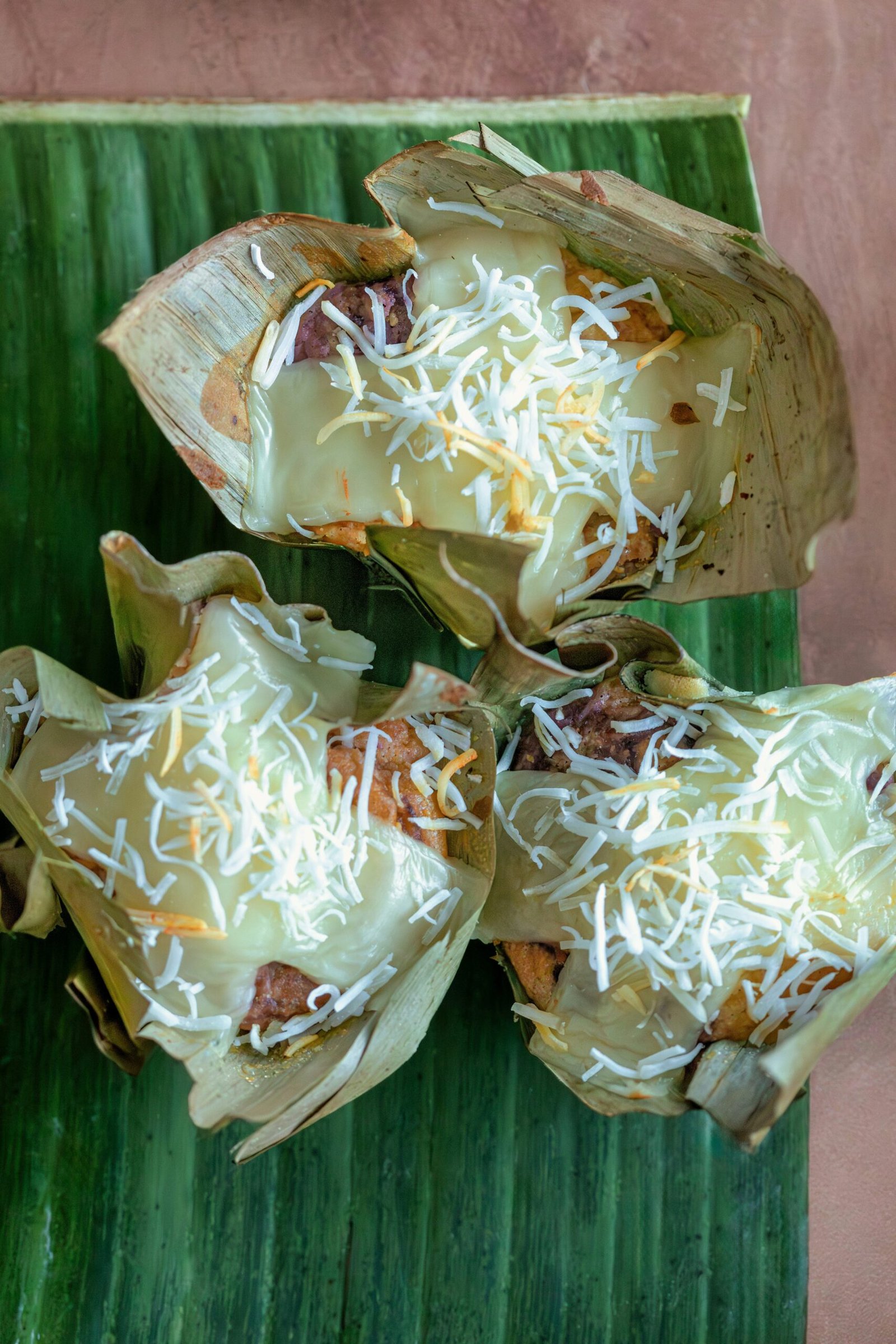Introduction to International Cuisine
Exploring international cuisine opens up a world of flavor and creativity that transcends geographical boundaries. Each culture offers a unique culinary heritage, rich in traditions and influenced by local ingredients, climate, and history. The joy of trying new dishes can be both an adventurous and enriching experience, allowing individuals to connect with diverse cultures through the universal language of food. Whether it’s the aromatic spices of Indian curries or the delicate flavors of Japanese sushi, international recipes invite us to broaden our palates and deepen our culinary knowledge.
For beginners, the prospect of diving into the world of international cooking might seem daunting; however, it is important to note that many traditional dishes can be simplified without compromising their authenticity. Numerous accessible recipes allow novice cooks to experience international flavors at home. These recipes are designed with ease of preparation in mind, often requiring minimal ingredients and straightforward techniques. By breaking down intricate processes and using readily available components, anyone can enjoy a delightful culinary journey.
Cooking can serve as a fun and educational experience, encouraging individuals to step out of their comfort zones. By trying new recipes from various cultures, individuals not only refine their cooking skills but also develop an appreciation for the diversity of global cuisine. Each dish tells a story and reflects the heritage of its people, allowing those who cook it to partake in a global tradition. Ultimately, as we prepare international dishes, we create an opportunity to celebrate the rich tapestry of cultures that exist around us. This blog post will present several beginner-friendly recipes designed to inspire you to embark on your own culinary exploration.
Italian Inspired: Pasta Aglio e Olio
Pasta Aglio e Olio is a classic Italian dish renowned for its simplicity and rich flavor, making it an ideal recipe for beginners eager to explore Italian cuisine. The main ingredients include spaghetti, garlic, olive oil, red chili flakes, and fresh parsley. This dish not only showcases the beauty of Italian cooking but also emphasizes that a few quality ingredients can create an exquisite meal.
To prepare Pasta Aglio e Olio, begin by gathering your ingredients. You will need 400 grams of spaghetti, 4 cloves of garlic (thinly sliced), 60 milliliters of extra virgin olive oil, 1 teaspoon of red chili flakes (adjust to taste), and a handful of fresh parsley (chopped). Optionally, you may also include grated Parmesan cheese for added flavor.
Start by boiling a large pot of salted water over high heat. Once simmering, add the spaghetti and cook according to the package instructions until al dente. Reserve about a cup of the pasta water before draining the spaghetti. This starchy water will help create a cohesive sauce later.
While the pasta cooks, heat the olive oil in a large skillet over medium heat. Add the sliced garlic, stirring frequently until it becomes golden brown and fragrant, being cautious not to burn it. This step is key to achieving the perfect balance of flavors. When the garlic is ready, stir in the red chili flakes.
Once the spaghetti is drained, add it to the skillet along with a splash of the reserved pasta water. Toss everything together, ensuring that each strand of pasta is coated in the aromatic oil and garlic mixture. Finally, fold in the chopped parsley and season with salt to taste. For those who enjoy a cheesy accent, freshly grated Parmesan cheese can be sprinkled on top before serving.
This Pasta Aglio e Olio recipe is a delightful introduction to Italian cuisine and is sure to impress anyone at your dining table. Its straightforward preparation and elegant simplicity illustrate that delicious, home-cooked Italian meals can be achieved with ease.
Mexican Inspired: Tacos al Pastor
Tacos al Pastor is a beloved dish that originates from Mexico, boasting a rich combination of flavors that are both vibrant and appealing. This recipe simplifies the classic preparation, making it accessible for beginner cooks who wish to explore authentic Mexican cuisine. At the heart of Tacos al Pastor is marinated pork, but vegetarians can easily substitute with mushrooms or jackfruit for a delicious twist.
To begin, gather the following ingredients: 10 small corn tortillas, 1 pound of marinated pork (or your chosen vegetarian substitute), 1 cup of fresh pineapple chunks, 1 small onion (finely chopped), and a handful of cilantro (chopped). For marinating the pork, create a blend of garlic, cumin, paprika, and your preferred chili powder mixed with an acidic component such as lime juice or vinegar. Allow the pork to marinate for at least an hour, preferably overnight, to enhance the flavors.
Next, heat a skillet over medium-high heat. If using pork, cook for about 6-8 minutes until it reaches an internal temperature of 145°F and exhibits a pleasing caramelized exterior. For a vegetarian option, sauté your substitute until browned and tender, which usually takes around 5-7 minutes. This not only locks in flavor but also ensures a firm texture that can stand up to the other vibrant ingredients.
Once the meat (or substitute) is cooked, it is time to assemble the tacos. Warm the corn tortillas in a dry skillet for about 30 seconds on each side. Layer the cooked pork or vegetarian alternative onto each tortilla, followed by fresh pineapple chunks, the chopped onion, and a sprinkle of cilantro. The pineapple adds a delightful sweetness that balances the savory marinated meat.
Overall, this Mexican-inspired recipe is a fantastic way to step into the world of international cuisine, offering a delicious and engaging cooking experience.
Indian Inspired: Chana Masala
Chana Masala is a beloved Indian dish that presents a vibrant fusion of aromatic spices and hearty chickpeas. For beginners, this recipe highlights how accessible and rewarding cooking Indian cuisine can be, utilizing canned chickpeas and common pantry staples. Below are the necessary ingredients and a straightforward step-by-step method for preparing this delicious chickpea curry.
Ingredients:
- 2 cans of chickpeas (drained and rinsed)
- 1 large onion (finely chopped)
- 2 medium tomatoes (chopped)
- 2 cloves of garlic (minced)
- 1 inch piece of fresh ginger (grated)
- 2 tablespoons of vegetable oil
- 1 teaspoon cumin seeds
- 1 teaspoon ground coriander
- 1 teaspoon garam masala
- 1 teaspoon turmeric powder
- Salt to taste
- Cilantro for garnish
Instructions:
- Heat the vegetable oil in a large pan over medium heat. Once hot, add the cumin seeds and sauté for 30 seconds until fragrant.
- Introduce the chopped onions, cooking until they turn golden brown. This process will take approximately 5 to 7 minutes.
- Add the minced garlic and grated ginger to the pan. Stir continuously for around 1 minute to prevent burning.
- Incorporate the chopped tomatoes along with the ground coriander, turmeric powder, and salt. Cook until the tomatoes soften and the mixture thickens, about 5-8 minutes.
- Mix in the chickpeas and about 1 cup of water. Bring the mixture to a gentle simmer, allowing it to cook for 10 minutes.
- Finally, stir in the garam masala and let it simmer for an additional 2 minutes. Adjust the seasoning as necessary.
- Garnish with freshly chopped cilantro before serving.
Chana Masala can be served warm with rice or naan, presenting a satisfying way to experience Indian cuisine. Enjoy this journey of flavors and textures as you explore the culinary delights that define this dish.
Japanese Inspired: Vegetable Ramen
Vegetable ramen is a beloved staple of Japanese cuisine, known for its comforting qualities and nourishing ingredients. This dish not only showcases vibrant flavors but also promotes a healthy balance thanks to the variety of vegetables and the savory broth. For beginners, crafting a simple vegetable ramen can be an enjoyable and rewarding experience. Below is a straightforward recipe that captures the essence of this classic comfort food.
To start, gather your ingredients. You will need ramen noodles, which serve as the foundation of your dish. Assorted vegetables such as bok choy, carrots, and mushrooms will add depth and texture. Additionally, vegetable broth and soy sauce are essential to infuse your ramen with the umami flavors characteristic of Japanese cooking.
Begin by bringing a pot of water to a boil and adding the ramen noodles. Cooking time will vary depending on the type of noodles you use; typically, they take about three to five minutes. Stir occasionally to prevent sticking. Once cooked, drain the noodles and set them aside.
Next, prepare the broth. In a separate pot, heat your vegetable broth until it reaches a simmer. Add a splash of soy sauce to enhance the broth’s savory profile. Incorporate your assorted vegetables into the simmering broth, allowing them to cook just until tender. This usually takes around 5 to 7 minutes. The bok choy should wilt slightly, while the carrots and mushrooms soften without losing their crunch.
Once the vegetables are cooked to your liking, combine the ramen noodles with the broth and vegetables. Stir gently to ensure the noodles are well-coated. You can also garnish your ramen with additional toppings such as green onions or sesame seeds to enhance both flavor and presentation. This simple vegetable ramen recipe provides a delightful introduction to Japanese cooking while satisfying your palate with its rich flavors.
French Inspired: Ratatouille
Ratatouille is a quintessential French dish that embodies the essence of classic French cuisine while remaining accessible for inexperienced cooks. At its core, this vibrant vegetable medley allows for a creative expression through the use of fresh produce and aromatic herbs. To prepare a beginner-friendly Ratatouille, one needs a collection of basic ingredients, including zucchini, eggplant, bell peppers, tomatoes, and a selection of herbs such as basil and thyme.
To begin, gather your ingredients to ensure a smooth cooking process. You will require two zucchinis, one eggplant, two bell peppers (preferably one red and one yellow), and four ripe tomatoes. First, wash and dry all the vegetables thoroughly. Next, chop the zucchini and bell peppers into bite-sized pieces, and cube the eggplant into similarly sized portions. For the tomatoes, you can choose to dice them or crush them for a smoother texture in the dish.
Once the vegetables are prepared, it is time to layer them in a baking dish. Preheat your oven to 375°F (190°C). Start by spreading a layer of crushed tomatoes at the bottom of the dish, creating a moist base for the other vegetables. Next, elegantly arrange the chopped zucchini, eggplant, and bell peppers in a spiral pattern over the tomato base. This not only enhances the visual appeal of your Ratatouille but also ensures that each vegetable cooks evenly.
After arranging the vegetables, sprinkle them with salt, pepper, and finely chopped herbs. Drizzle with olive oil to enhance the overall flavor of the dish. Cover the baking dish with aluminum foil and place it in the preheated oven for approximately 30-35 minutes. This cooking method allows the vegetables to roast, enhancing their natural sweetness. Once cooked, the Ratatouille can be served warm or at room temperature, making it a versatile and flavorful vegetarian option. With its colorful presentation and incredible taste, Ratatouille is sure to impress both cooks and diners alike.
Chinese Inspired: Fried Rice
Fried rice is a beloved dish that showcases the versatility of rice, making it an ideal meal option for beginners and experienced cooks alike. This quick and satisfying recipe allows you to utilize leftover rice, transforming it into a delicious dish in under 30 minutes. The fundamental ingredients include cooked rice, mixed vegetables, eggs, soy sauce, and freshly chopped green onions.
To begin, gather the following ingredients:
- 2 cups of cooked rice (preferably cold)
- 1 cup of mixed vegetables (carrots, peas, bell peppers, etc.)
- 2 large eggs
- 3 tablespoons of soy sauce
- 2 green onions, chopped
- 2 tablespoons of vegetable oil
- Salt and pepper to taste
Start by heating a large skillet or wok over medium-high heat. Add the vegetable oil, ensuring it coats the surface evenly. Once the oil is hot, crack the eggs into the pan, scrambling them until they are fully cooked. This typically takes about one to two minutes. Once done, remove the eggs from the pan and set them aside.
Next, in the same skillet, add the mixed vegetables, stirring frequently for approximately two to three minutes until they become tender. Then, add the cold cooked rice to the pan. It’s crucial to break up any clumps of rice to ensure even frying. Continue to stir-fry for another three to four minutes, allowing the rice to absorb the flavors from the vegetables and oil.
Now, drizzle in the soy sauce, mixing it thoroughly to ensure even distribution. Reintroduce the scrambled eggs and add the chopped green onions. Season with salt and pepper to taste. After a few more stirs, your homemade fried rice is ready to serve. Enjoy a delightful meal perfect for any time of day—simple, flavorful, and made with ease.
Tips for Cooking International Dishes at Home
Cooking international dishes at home can be a rewarding and enriching experience. To embark on this culinary journey, the first step is to source the right ingredients. Local grocery stores may offer a limited selection, so consider exploring international markets or specialty stores in your area. These outlets often carry authentic spices, sauces, and other ingredients that are essential for preparing traditional recipes. If you cannot find certain items, look for substitutes that mimic the flavor profile; for example, if a recipe calls for lemongrass, consider using lemon zest and a bit of ginger for a similar taste.
Next, it is important to understand the fundamental cooking techniques associated with various cuisines. Researching the specific preparation methods for different international dishes can greatly enhance the authenticity of your culinary efforts. Whether it’s sautéing, braising, steaming, or frying, understanding these techniques will help you replicate traditional flavors successfully. Additionally, many international recipes include unique flavor profiles, which may differ significantly from those typical of your own cooking. Take the time to familiarize yourself with the spices and ingredients characteristic of the cuisine you are exploring; this knowledge is essential for balancing flavors effectively and achieving a harmonious dish.
Finally, do not hesitate to experiment. Cooking is as much an art as it is a science, and every cook develops their style over time. Adapting recipes to suit your preferences or local availability encourages creativity and innovation. Keep a record of your modifications and notes on what worked and what did not, as this can be invaluable for future culinary endeavors. By embracing experimentation, you will gain confidence in your cooking skills and allow yourself to enjoy the delightful world of international cuisine.
The Benefits of Cooking with International Recipes
Cooking with international recipes provides a multifaceted array of benefits that go beyond mere meal preparation. One of the primary advantages is the opportunity to enhance cultural understanding. By exploring dishes from various countries, individuals can gain insights into different culinary traditions, ingredients, and cooking techniques. This exploration fosters a greater appreciation for global diversity and helps bridge cultural gaps. Each recipe often tells a story of its origin, offering context about the people and traditions behind the dish.
Additionally, venturing into international cuisine can significantly improve cooking skills. Experimenting with unfamiliar ingredients and methods challenges home cooks to step out of their comfort zones. This not only aids in honing fundamental techniques, such as chopping vegetables or adjusting flavor profiles, but also encourages innovative thinking in the kitchen. Learning to balance spices in an Indian curry or mastering the art of rolling sushi can elevate one’s culinary repertoire, providing a sense of accomplishment and confidence in the kitchen.
Moreover, preparing international recipes provides a unique opportunity for family bonding. Engaging in the cooking process together can become a memorable family activity, where each member contributes to the meal. Selecting recipes, gathering ingredients, and cooking as a team cultivates communication, cooperation, and problem-solving skills. It creates an environment for sharing stories and experiences, making the cooking process enjoyable and educational. Sharing the final product—a delicious dish—further enhances the sense of community and achievement among family members.
Incorporating international recipes into weekly meal planning encourages individuals to embrace culinary diversity, enriching their dining experiences and fostering a deeper connection with food from around the world. This practice not only broadens one’s palate but also nurtures creativity and adaptability in the kitchen.
Conclusion and Encouragement to Explore
As we reach the end of this culinary journey through beginner-friendly international recipes, it is essential to recognize the value that cooking at home brings to our lives. Not only does it allow us to experiment with diverse flavors from around the world, but it also fosters an appreciation for different cultures and their culinary traditions. This blog post has introduced a variety of delicious dishes that are accessible to novice cooks, aiming to inspire you to step into the kitchen and try your hand at making these international recipes.
Engaging with these recipes can be a delightful way to develop your cooking skills while discovering the stories behind each dish. Preparing meals for yourself or your loved ones not only promotes a sense of achievement but also offers a wonderful opportunity to create lasting memories around the dining table. By embracing the process of cooking at home, you share in traditions and customs that have been passed down through generations, deepening your understanding of global cultures.
We encourage you to take the plunge and experiment with the recipes provided. As you embark on this culinary adventure, don’t hesitate to make adjustments based on your preferences or local ingredients. Be bold in your explorations; you might uncover delightful combinations and unique interpretations that make each meal your own. Additionally, we welcome you to share your cooking experiences in the comments section or suggest new recipes that pique your interest. Whether it is a dish from your own culture or an international favorite, your contributions will enrich this space for everyone seeking to appreciate the art of home cooking.
In conclusion, the world of international cuisine is vast and filled with endless possibilities. Let your kitchen become a place of experimentation and joy, as you explore flavors that can take your palate on an extraordinary journey.











